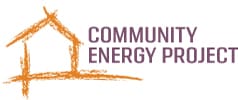Urban Heat Islands are Everyone’s Problem
Heat affects everyone, but it does not affect everyone equally. The people that Community Energy Project serves – low-income households, BIPOC folks, seniors, disabled individuals, and other marginalized populations – are most vulnerable to the negative impacts of climate change for a variety of reasons. Along with being underrepresented in environmental justice spaces, these communities are often residents of “urban heat islands.”
What is an Urban Heat Island?
Urban heat islands are urban areas that are significantly warmer than surrounding rural areas – typically by 10-20 degrees. These heat islands are formed due to human activities in areas where there is a high density of buildings, roads, and other infrastructure which absorbs and retains heat more than natural landscapes. Urban heat islands also lack vegetation and tree coverage to provide shade and improved air quality.
Impacts of Urban Heat Islands
As a result of redlining, people of color and low-income communities are more likely to live in neighborhoods that have become contemporary urban heat islands. During heatwaves, populations such as seniors, young children, low-income households, outdoor workers, and people with poor health are at an increased risk of experiencing heat-related illnesses and even death.
Due to heat inequity, these communities are also driven to rely more heavily on cooling and air conditioning systems which inevitably cause higher energy usage. As a result, these homes are exacerbating climate change by emitting increased levels of carbon dioxide and greenhouse gasses into the environment. Additionally, urban heat island residents typically live in households that are not energy efficient and are therefore more difficult and more expensive to cool, which drastically raises their utility bills. Many of the homes CEP serves do not have air conditioning, leaving them more susceptible to dire health issues.
Urban heat island populations not only suffer from the stress of increased temperatures, they are forced to endure financial burdens to try to keep their homes comfortable and are at a higher risk of respiratory illnesses, heat exhaustion, heat stroke, and heat-related mortality.
Reducing the Risks of Urban Heat Islands
The ramifications of urban heat islands are not the sole responsibility of the residents of these areas. Portland summers continue to trend hotter as the climate crisis is accelerated and are no longer an anomaly, but a distressing pattern. Local governments can step in to mitigate these risks with the provision of urban cooling centers, increased heat safety education, and modifying the city’s infrastructure and improving energy efficiency measures.
Community Energy Project recognizes the limitations of our community members, both financially and physically. For those that are able, one way to reduce the effects of urban heat islands is planting trees and other vegetation around your home. Trees and other greenery can provide your home with shade and other cooling benefits such as evapotranspiration. Another method is using energy efficient appliances and equipment to reduce your energy consumption and increase the affordability of your home. CEP has proudly helped thousands of households to reduce their carbon footprint and save money through our energy efficiency home retrofits, completely free of charge. If you are interested in increasing the sustainability and affordability of your home, income-qualified individuals can schedule their free Home Energy Score to take the first step toward a greener future.
Urban heat island residents must be extra vigilant about their health and the health of their loved ones. If you are in need of cooling resources, call 211 or visit the Multnomah County website for support from the City of Portland.

